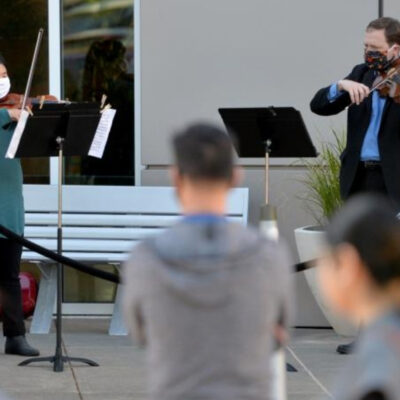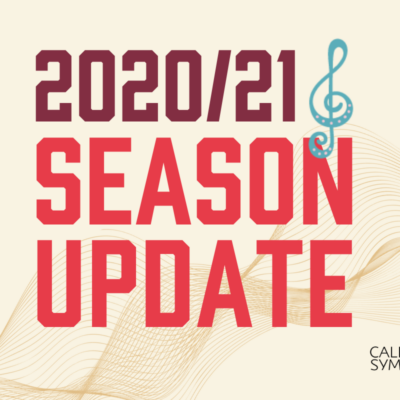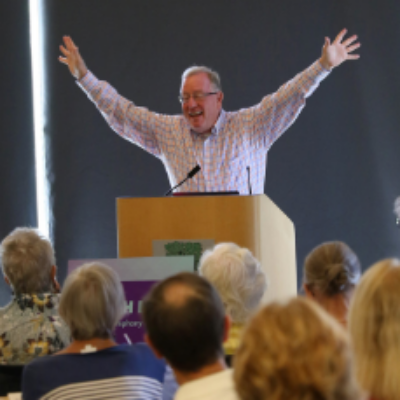This California-born, Grammy award-winning composer was included in the Washington Post’s list of the 35 most significant women composers in history. In case you hadn’t heard of her before, here’s a quick primer.

Bay Area native Gabriela Lena Frank is an acclaimed composer and one of the leading voices for multiculturalism in classical music today. Her song cycle La Centinela y la Paloma (The Keeper and the Dove), which is featured in the California Symphony’s 2019/20 season opener ICONIC BEETHOVEN, is the product of a collaboration with Pulitzer Prize-winning Cuban playwright Nilo Cruz and tells the story of artist Frida Kahlo as a ghost, returning for one last visit with her beloved husband Diego Rivera during the Dia de los Muertos festival. Here are nine fast facts about this rising composer whose works have been commissioned and performed by the likes of San Francisco Symphony, Boston Symphony, Seattle Symphony, the Kronos Quartet and legendary cellist Yo Yo Ma.
1. Composer Gabriela Lena Frank was born in Berkeley in 1972 and currently lives in Boonville (population: 1,200), about 2 hours north of San Francisco.
2. She was born with a moderate to profound hearing loss.
3. Cultural identity is at the center of Frank’s music and it was an important aspect of her own up-bringing: Her father is of Lithuanian/Jewish descent, and her mother is Peruvian, of Chinese descent. Growing up, Frank was exposed to a lot of traditional South American music.
I firmly believe that only in the United States could a Peruvian-Chinese-Jewish-Lithuanian girl born with significant hearing loss in a hippie town successfully create a life writing string quartets and symphonies.”
4. Frank’s composing talents started when she was young, when her piano teacher encouraged Frank to experiment with mixing styles and to make up little songs on her own. Frank would often include folk music and Andean elements in her improvisations.
5. Coming of age during Gorbachev’s perestroika and the fall of the Berlin Wall during the ’80s, she initially planned to pursue Russian Studies, however a summer music program at the San Francisco Conservatory of Music in her final year of high school changed all that.
It changed my life, because I was exposed to this whole music world I didn’t know existed. This idea of becoming a composer came to me right away. I didn’t know what that meant, or what it was like, but I had written my first piece down on paper, and heard it come to life at the hands of other kids my age and younger, and I was hooked, instantly. Instantly.”
6. Frank joined the music composition program at Rice University and later gained her doctorate at University of Michigan’s School of Music, Theatre & Dance in 2001. While working on her doctorate, Frank began to remember her love for South American folk music, and inspired by composers like the Hungarian Béla Bartók and the Argentinian Alberto Ginastera — who similarly celebrated their own cultures — she started to combine elements of South American music with her classical training.
I realized that I had found my mission,” Frank explained. “I wanted to, in a very general way, be as mestiza* in my music as I was in my person: I’m multiracial, I’m multicultural, and I think that that’s something deeply American.”
* Mestiza: A woman of mixed race or ethnic ancestry, especially in Lain America, of mixed American Indian and European descent.—Dictionary.com
7. In 2017, she founded the Gabriela Lena Frank Creative Academy of Music, and she offers emerging composers short retreats at her home in Boonville in Mendocino County.
8. She is passionate about teaching young composers the importance of community engagement. Frank herself has volunteered extensively in hospitals and prisons. She has also worked with deaf African-American high school students in Detroit who rap in sign language.
9. Frank could be described as a musical anthropologist. Her music blends her South American studies and extensive travel experience with her Peruvian heritage, overlaid with a contemporary American point of view.
[The Andean influence] changes just because it has to mix and blend with my psyche, which was formed here, was formed in the United States. I’ve spent most of my time here, in my home country. For me, again, I feel like that’s very American. We bring in a lot of cultures, eat it up and make it into something new. We’ve been doing that for centuries.”
Frank’s quotes in this piece are extracted from a 2017 interview with The Michigan Daily. For the full article, please see: https://www.michigandaily.com/section/arts/life-outside-golden-cage-composer-gabriela-lena-frank-profile
The California Symphony’s season opener ICONIC BEETHOVEN takes place on Saturday, Sept. 14 at 8 PM and Sunday, Sept. 15 at 4 PM at the Lesher Center for the Arts in Walnut Creek.
Visit www.californiasymphony.org for tickets and more information.



